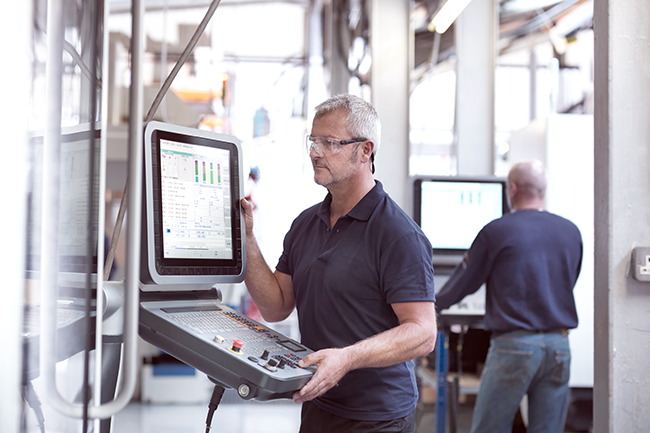In Africa, unique applications of machine-to-machine (M2M) systems have the potential to address the continent’s developmental challenges – such as achieving universal access to energy and water – in addition to boosting industry.
However, the unreliability of power and internet connections remains a hindrance to M2M deployment, while tech companies will also need to ramp up development of new devices, platforms and applications in order to unlock the value of M2M in Africa.
M2M systems offer numerous benefits to organisations, such as improving operational efficiency and reducing costs as a result; and providing customers with a more streamlined experience, leading to a boost in revenues, to name but a few. Many of these core benefits are actually derived from the data gleaned from machine learning.
On the initial level, M2M solutions allow organisations – ranging from enterprises to governments – to better monitor changes in their environments, as well as keep track of the state of products, explains Alexandra Rehak, internet of things (IoT) practice leader at research analysis firm Ovum. This ‘critical’ data can then be analysed, and new solutions integrated to make conclusions automatically actionable. ‘Further value comes from analysing the data gathered and using it to trigger actions or processes automatically,’ she says. ‘For example, a sensor on your car engine that measures temperature or vibration data [can] alert you when a part is about to fail, and then also automatically trigger an order for a replacement part from the manufacturer.’
The emergence of the M2M space can also give Africa’s tech industry – and the continent’s tech-based economies – a boost. By creating products based on machine-gathered learnings, tech businesses can come into opportunities of their own, says Rehak.
Tech businesses can capitalise on the rise of M2M systems by creating specialist applications and products that assist other companies in unlocking the promised value of M2M within their own industries.
‘There are significant opportunities for applications developers to create IoT applications in areas ranging from remote monitoring and predictive maintenance of machinery, to delivering smart street lighting and public safety in cities.
‘There are opportunities for specialist device and solutions providers to develop IoT devices that can connect a wide variety of ‘things’ in industry verticals including energy, agriculture, smart cities, connected cars and many others,’ says Rehak.
In addition, there will also be opportunities for systems integrators to pull together all the individual components of IoT networks, platforms, applications and devices to deliver full end-to-end solutions for enterprises, she says.
However, the creation of M2M solutions is not a once-off event, and the design process is not limited to a cluster of specialist tech businesses creating IoT-based solutions for other industries.
Once implemented within an organisation, M2M creates a circular design process – machine-produced learnings from M2M solutions can feed back into the design of the next generations of products, says Sylwia Kechiche, lead M2M analyst at GSMA Intelligence.
This machine learning-based design process also often leads to the unlocking of new revenue streams, and encourages the development of new business models.
‘Manufacturers can easily track and analyse product life cycles, for example with cars, and leverage key understandings to improve product design and develop new features and capabilities,’ she says. ‘This in itself creates new business models.’
One standout example of a design-oriented M2M solution is GE’s Digital Twin project, says Kechiche. The Digital Twin is a digital model of a physical asset that continuously learns from the physical counterpart through embedded sensors.
Through this technology, GE can monitor the performance of its machines without disrupting their operation, and can combine other data elements – such as relating to the machine’s environment – to predict future performance.
Projects such as this allow companies to better understand the operation of its products, make improvements, adjust business models and unlock new revenues. While M2M solutions undoubtedly will play a role in Africa, the trajectory to becoming an IoT-powered continent will still be a long one.
There have been some early projects in Africa. South Africa is trialling smart energy grid solutions across 10 pilot projects around the country. Etisalat has rolled out an IoT platform for enterprise customers in Egypt and Nigeria, and Deutsche Telekom recently reported an M2M initiative to improve operational efficiency at South Africa’s port of Durban.
However, by and large, there is currently very limited activity in the M2M space on the continent, largely due to the unreliability of infrastructure required to underpin M2M solutions, such as electricity and internet connectivity.
‘M2M and IoT can have significant impact in Africa, but it’s still very early days in this region,’ says Rehak. ‘Fundamentally there must be several things in place for it to really take off. Basic core connectivity and the ability to reliably send and retrieve data from the cloud are important, and this is still a challenge in some regions where communications infrastructure is still developing.’

She also says there needs to be a clear business case for IoT or M2M. In some instances in Africa this is still in the process of emerging, although in other areas there is already eagerness to implement machine-based services.
‘We do see strong activity starting in some sectors including asset tracking and logistics, fleet management and connected vehicles, and smart city and home applications, particularly around security. Agriculture is another area likely to benefit.’

As with other technologies implemented in Africa, the M2M space will probably see unique applications in the African market, some of which could help address developmental challenges on the continent. For Kechiche, the off-grid energy sphere is where M2M will have the most obvious impact in Africa.
‘Two-thirds of the 1.2 billion off-grid population in Africa are covered by mobile networks and can therefore benefit from mobile-enabled utility services, such as mobile-enabled pay-as-you-go solar energy,’ she says.
By combining IoT, cloud computing, solar energy and payments innovations, smart grids in Africa can have a huge impact in boosting energy access for consumers, particularly rural and off-grid populations.
For providers, the M2M connectivity of these grids enables predictive maintenance, and provides a better understanding of customer power consumption profiles.
The GSMA predicts the application of M2M in Africa will accelerate over the next three years, and will also feature the implementation of smart mobile solutions in spaces addressing the UN’s Sustainable Development Goals.
‘We forecast that the number of cellular M2M connections in sub-Saharan Africa will reach 26 million by 2020, up from 13 million in 2016, as new M2M solutions are rolled out.’
















